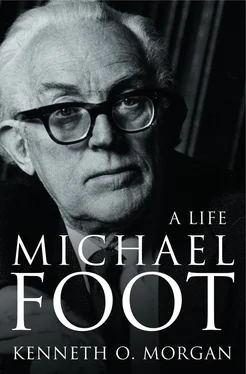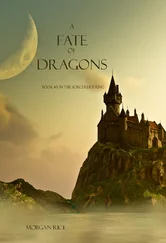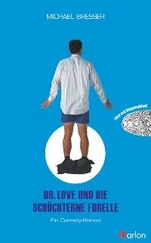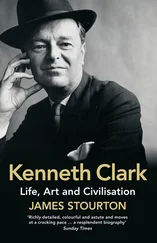The Trial of Mussolini is a short polemic, only eighty-two pages and perhaps forty thousand words long, but it is most cleverly written, with much subtle argument. Its style of dramatic personal confrontation between judge and witnesses meant that it lent itself to being turned into dramatic form by political and dramatic societies. George Orwell praised it as such in his review in Tribune . Foot himself considered it a better and more complete book than Guilty Men . 21 The conceit of a public trial with eminent witnesses is skilfully sustained throughout. Although the action concerns the trial of Mussolini, the dictator in many ways comes out strongly, giving a vigorous defence of his policies and making short work of any British claims to moral superiority in the area of ‘wars of aggression’. Really it is the witnesses who are in the dock. Successively, Austen Chamberlain describes an amiable meeting with Mussolini in 1924, when Chamberlain was Foreign Secretary. Lord Rothermere, owner of the Daily Mail , relates how in 1928 he stated that ‘Mussolini will probably dominate the history of the twentieth century as Napoleon dominated that of the early nineteenth century.’ Neville Chamberlain confirms the long-held support of British Tories for the Italian dictator. Lord Simon testifies to British double-dealing over Abyssinia. Sir Samuel Hoare is condemned by counsel as ‘disingenuous’ over his notorious pact with Pierre Laval, the future Prime Minister of the Vichy government, about the Italian invasion of Abyssinia in 1935. Halifax and Leo Amery offer similar testimony. Special attention is paid to Hore-Belisha, Foot’s target in Devonport, who had visited Rome in 1938 and received a bronze medallion from Mussolini. Even Churchill receives a momentary glance of disapproval. The judge concludes in emotional tones to draw a distinction between the English people and ‘the England of the Chamberlains, the Simons, the Hoares’ and the rest of the Tory Party which consorted with Fascism and connived at imperialist war. 22
The Guilty Men are thus given another pasting, though perhaps in an over-complex way. The Trial of Mussolini sold slightly less well than ‘Cato’s’ work of 1940, but sales still rose to 150,000. It aroused some criticism as being anti-patriotic. Gollancz sturdily defended the author: ‘Michael Foot … would be interested to find himself described as seditious. So would his father, old Isaac … So would the electors of Devonport, who, if they have the wit to understand the true meaning of British honour and British interests, will in a few weeks’ time [sic] be returning Michael to Parliament.’ The reviews, however, were very favourable, especially one from the Conservative Catholic Christopher Hollis. Another, more predictable admirer was Isaac Foot: ‘He is a fine boy and … he has a fire in his belly.’ 23 But Foot this time made less of an impact. At least the book made him more money than its predecessor, with no absconding agent this time. It also confirmed his unique skill as a patriotic pamphleteer.
There had been announced another project of Foot’s, to appear in the ‘Searchlight Books’ series published by Secker & Warburg under the editorship of George Orwell and Tosco Fyvel, both active in the world of Tribune/New Statesman left journalism. Ten books appeared in the series in 1941–42, covering various projections for post-war reconstruction, by such notable authors as Sebastian Haffner, T. C. Worsley, Ritchie Calder and Joyce Cary. The series was launched in 1941 by Orwell’s own famous study of the British national character The Lion and the Unicorn , which, rather modestly, sold over ten thousand copies. Michael Foot was announced as the author of a forthcoming work entitled Above All Things – Liberty . But the publishers’ printers at Portsmouth, along with their stock and paper, were destroyed by the Luftwaffe in 1942, so nothing came of it.
In November 1944 Foot published another squib with Gollancz, this time of overtly party political slant, with an election now on the horizon. This was Brendan and Beverley , a book of just seventy-eight pages. Foot’s name appeared as the author, and he was now formally identified as the writer and co-writer of the two earlier works. This one was a parody of an imagined conversation between two Conservatives, Brendan Bracken, who was close to Churchill and was now Minister of Information, and Sir Beverley Baxter, a right-wing Canadian MP, a strongly imperialist Chamberlainite throughout, and Member for Wood Green and Southgate. In the same month Foot wrote savagely to The Times denouncing Baxter as a pro-Chamberlain appeaser, and dismissing a book of his as ‘a satire on political sycophancy’. 24 Brendan and Beverley takes the form of a dialogue between the two Conservatives named in Disraeli’s Coningsby , ‘Taper’ (Bracken) and ‘Tadpole’ (Baxter). They give their different versions of Conservative philosophy, but neither is convincing. Baxter was a particular běte noire of Foot’s, and he is the more obvious target, but ‘Taper’ also gives a poor performance. He defends the Churchill coalition, of which Foot was now a strong critic, ‘since it can do down ideas of reform’. There is a patriotic peroration on Churchillian lines, but it is given to an unnamed Labour politician. 25
This book did not sell well: its message was too oblique for the general public, and it anticipated an election which was not yet called. What it did do was confirm the sharp breach with Beaverbrook, who was close to both Taper and Tadpole. Brendan Bracken was a frequent house-guest at Cherkley, and was actively involved with Beaverbrook in preparing the Conservatives’ propaganda campaign in the coming election. Baxter had actually been editor of the Daily Express up to 1933, and was later to serve as theatre critic of the Evening Standard . Attacking them both, as a way of pronouncing anathema on all Tories and their works, was Foot’s clearest possible declaration of divorce.
Foot was now very much a doer as much as a commentator. From 1943 to 1945 he engaged in a bewildering miscellany of protest movements, all characteristic of the rich crucible of the war years. He remained active in the India League and friendly with Krishna Menon. He was now campaigning actively for the Zionist cause, and was prominent on the Anglo-Palestine Committee, chaired by Israel Sieff, managing director of Marks & Spencer, and also including Frank Owen, Kingsley Martin, David Astor and Lord Pakenham. Foot himself addressed it on the plight of Hungarian Jewry in 1944. 26 There was the League for the Rights of Man, with which Gollancz was identified and which became more vigorous after the United Nations came into being after the war. He was also a member of the National Council for Civil Liberties, founded in 1934, which had kept watch on the preservation of civil liberties during wartime. There were various bodies to affirm solidarity with the Soviet Union. Foot also kept very close to the intense milieu of political and literary protest, the natural habitat of writers like Orwell, Koestler and Fyvel, the world of the Penguin Special, the Left Book Club, Searchlight Books, Cyril Connolly’s literary periodical Horizon , and such transatlantic equivalents as Partisan Review and Dissent in New York. All this protest literature was fundamental to the wartime cultural hegemony of the British dissenting left. Michael Foot, barely into his thirties, was an increasingly influential part of it.
Finally, in this potpourri of leftish idealism, Foot was a member of the so-called ‘1941 Committee’ formed by J. B. Priestley and well described by the historian Paul Addison as ‘a perfect photosnap of the new progressive Establishment rising from the waves’. 27 It included not only Priestley himself and his wife Jacquetta Hawkes (both of whom Foot now got to know for the first time) but also Richard Acland, Thomas Balogh, Ritchie Calder, Kingsley Martin, Tom Wintringham and the Rev. Mervyn Stockwood, all of whom were later colleagues of Foot in CND, which it partly anticipated. However, the 1941 Committee was more broadly based, since it also included mainstream Labour figures like Douglas Jay and Christopher Mayhew, and even a one-nation Conservative, Peter Thorneycroft, leader of the Tory Reform Group. It faded away when several of its key figures (though not Foot) joined Acland’s new Common Wealth Party the following year.
Читать дальше












